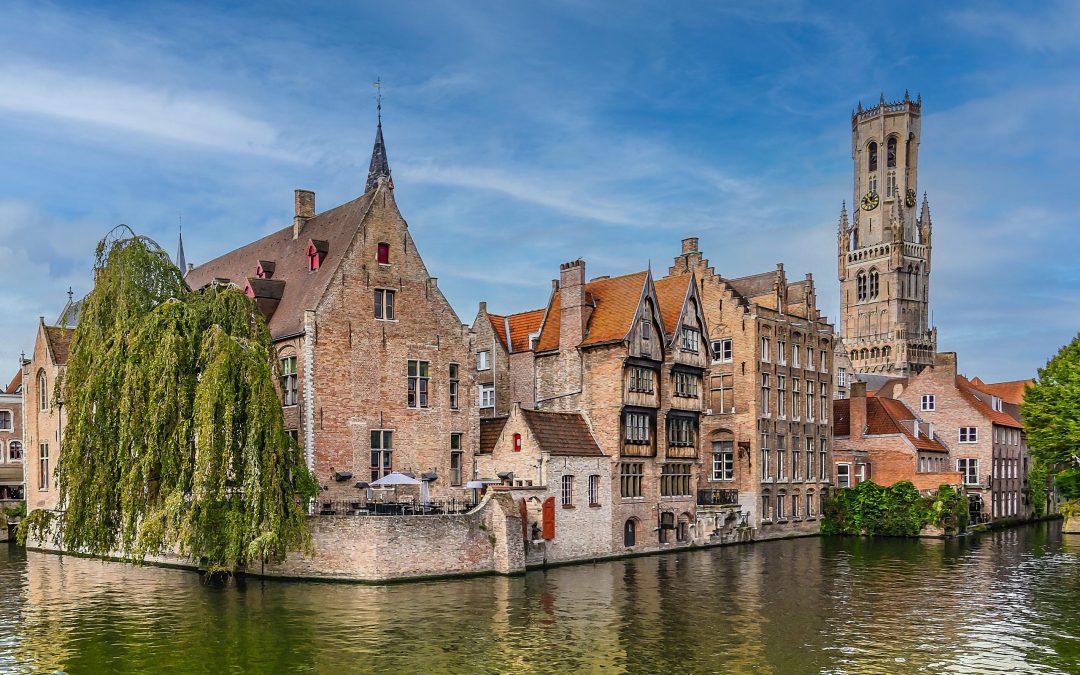
Bruges City Tour, Belgium
Bruges Tour of the Medieval Centre
Bruges’ golden age may have been from the 12th to 15th centuries—when it was a busy trading port—yet this medieval city remains one of the world’s most beautiful culture hubs. Laden with Gothic architecture and home to early Flemish painters, it is a city that has captured hearts for centuries.
Our Bruges tour will take you to the the medieval centre of Bruges is remarkably well preserved and is a UNESCO world heritage site. Many of the medieval buildings in the ancient squares is a very popular tourist destination, so you need to plan your visit to avoid the tourists. Bruges is a heavyweight sightseeing destination, you can walk along a canal and explore the city, eat mussels and frits, and wash them down with the town’s own beer, brewed by Bourgogne des Flandres, and which is really nice.
Bruges’ golden age may have been from the 12th to 15th centuries—when it was a busy trading port—yet this medieval city remains one of the world’s most beautiful culture hubs. Laden with Gothic architecture and home to early Flemish painters, it is a city that has captured hearts for centuries.
The medieval town of Bruges is very popular with tourists thanks to its picturesque cobbled streets and historic buildings and the encircling canal and inside the city walls, many of the ancient buildings like the Basilica of the Basilica of the Holy Blood are still privately owned so you may have to request entrance into the building.
The Bruges almshouses which are whitewashed and can be seen in the townscape of Bruges, mostly clustered around a small courtyard. These were the precursors of public housing and were established in the 14th century by wealthy townspeople


Begin your sightseeing of Bruges around the central Grote Markt (Grand Place), which is surrounded by a series of gabled guildhalls and is also home to the iconic tower, which goes by the name of Belfry of Bruges (Belfort) and dates back to the 13th century. The other main public square in Bruges is the Burg, and this is where tourists will find the Basilica of the Holy Blood.
It is hard to miss is the city’s Sint Salvator Cathedral and also the beautiful Gothic-style Stadhuis (Town Hall), which is Belgium’s most historic and arguable most attractive town hall, is adorned with statues of various counts and countess from Flander
Bruges well-preserved medieval city centre that is ideal for discovering by foot. If you are in love now (or soon to be) the Lake of Love in Minnewaterpark is the place to be. Canals cut through parts of the city with grand houses lining the roads on their edges, next to pathways for walkers or cyclists.
The city’s famous medieval diamond industry, the Diamond Museum (Diamantmuseum) offers daily diamond polishing demonstrations and boasts many valuable diamond exhibits. The Gruuthusemuseum is also worth investigating and contains a number of beautiful silk tapestries and Belgian antiquities, while for art lovers in Bruges, the Memling Museum is the place to visit and works by Germany’s celebrated artist Hans Memling enjoy an attractive setting, is housed within a former hospital chapel.

The city’s waterways on a canal boat ride. take ride on the open-air boat and get ready to see the city from the water, giving you amazing views of landmarks that you simply can’t get from anywhere else.
To find a canal boat tour, go to one of four quays in the city, Huidenvettersplein, Nieuwstraat, Wollestraat, or Rozenhoedkaai Quay. Each boat holds around 20 people, with tours lasting half an hour. The tours leave regularly but there are often long queues, so arrive early in the morning or later in the evening to avoid a wait.
The St. Janshuis Mill is one of the medieval flour mills in Bruges that has survived in its original location till today. It has been declared as a World Heritage Site by UNESCO.
The St. Janshuis Mill or St. John’s Mill gets its name because it once supplied flour to the St. John’s Hospital. It is located on the banks of a tranquil canal on the ramparts of the original city fortress. There was a mill at the site from 1297 which was destroyed by a storm in 1744. The present building is the result of a reconstruction in 1770. It belonged to a family of millers until 1914 when it was purchased by the city of Bruges. The mill was neglected for 50 years and started functioning again in 1964.
Brugges Windmills have been carefully renovated and preserved and continue to make flour in the traditional way. In summer, when the wind is high, visitors can see the sails spinning at full speed just like it did in the middle ages. It is open for public view and visitors can learn the workings of a traditional flour mill from the millers. A steep staircase takes visitors to the museum located inside the St. Janshuis Mill.
